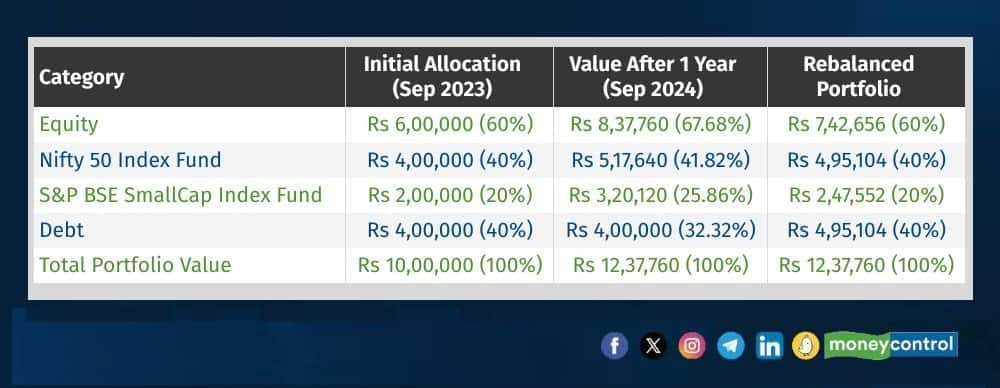



The average retirement age in India is between 60 and 65 years, which gives individuals enough time to save a sizeable amount for post-retirement life. However, in recent years, the concept of Financial Independence, Retire Early (FIRE), which emphasises achieving financial independence and retiring early, has become quite popular.
However, retiring early is easier said than done, especially when the market is volatile. The good news is that you do not have to climb the whole staircase, just take the first step. Here is how to implement FIRE strategically during volatile market conditions.
What is FIRE and why is it important during volatile markets?In 1992, Vicki Robin and Joe Dominguez wrote a book ‘Your Money or Your Life’, which is said to be the first reference point of the FIRE movement. The core principle of FIRE is to aggressively save and invest a large portion of your income, typically 50-70 percent, with the goal of retiring much earlier than the traditional retirement age.
However, during periods of market volatility, saving a large sum can be challenging. Also, market volatility can significantly impact your investment portfolios. For instance, during market downturns, the value of investments can decrease rapidly, affecting both the growth of your portfolio and your ability to withdraw funds sustainably.
Consider Afrin, a 40-year-old software engineer pursuing FIRE. He has saved and invested Rs 50 lakh over the past decade, aiming to retire by age 50 with a Rs 1 crore portfolio. However, a sudden market downturn causes a 30 percent drop in his portfolio value to Rs 35 lakh.
This Rs 15 lakh shortfall not only sets back Afrin's timeline to reach his Rs 1 crore goal but also impacts his potential withdrawal rate if he were to retire immediately as shown below. We have taken the 4 percent rule for illustration purposes; the actual withdrawal rate varies based on individual needs.
● 4 percent withdrawal rate on Rs 50,00,000: Rs. 2,00,000 annually
● 4 percent withdrawal rate on Rs 35,00,000: Rs. 1,40,000 annually
This example shows why understanding and implementing effective FIRE strategies during volatile markets is important.
1. Diversify portfolio for efficient asset allocationOne of the most important strategies of FIRE is creating a well-diversified portfolio that can weather volatile times. Diversification spreads risk across various asset classes, reducing the impact of poor performance in any single investment. According to Nobel Prize laureate Harry Markowitz, “Diversification is the only free lunch” when it comes to investments.
Based on individual financial goals and risk appetite, you need to approach diversification for FIRE. This diversification helps balance risk and potential returns, providing a buffer against market volatility while still allowing for growth.
For instance, if you have a high-risk tolerance level, equity instruments can be suitable which are known to provide competitive returns. However, since your goal is to retire early, diversifying in debt instruments including G-secs and bonds can reduce the overall risk of your portfolio as equity and debt markets are negatively correlated.
2. Focus on long-term goals rather than short-term market noiseOne of the biggest challenges during market volatility is maintaining a long-term perspective. It's easy to get caught up in daily market fluctuations and make impulsive decisions that can harm your FIRE goals.
However, short-term market fluctuations are often subdued in the long run. Over the long term, market noise does not matter and investors should keep a focus on their long-term goals to achieve their FIRE objectives.
3. Have funds set aside for emergenciesTo achieve FIRE objectives, setting an emergency fund is crucial. Having liquid cash prevents you from being forced to sell investments at inopportune times to cover unexpected expenses.
For a starter, you can start saving around 3 to 6 months of living expenses or monthly income in an easily accessible savings account. Once achieved, focus on saving for 6-12 months. This will be your added security and the buffer allows you to weather financial storms without derailing your FIRE progress.
4. Portfolio review and rebalancingOver time, as different assets perform differently, your portfolio's allocation can drift from your target percentages. This makes it important to rebalance the portfolio once a year. Let’s understand with an example. The initial investment amount is Rs 10 lakh.
Investment is made in 60 percent equity (40 percent in the Nifty 50 index and 20 percent in the BSE Small Cap Fund) and 40 percent in fixed-income instruments.

Portfolio rebalancing would be as below:

This strategy helps maintain your risk level while sustaining returns for your overall retirement portfolio.
5. Say no to emotional exuberanceWhether it's panic-selling during a downturn or FOMO (fear of missing out) buying during a bull run, letting emotions drive investment decisions often leads to suboptimal outcomes.
To avoid this, stay focused on the long term. Remember the quote of Benjamin Graham, in his book, The Intelligent Investor, “The investor cannot enter the arena of the stock market with any real hope of success unless he is armed with mental weapons that distinguish him in kind—not in a fancied superior degree—from the trading public.”
The stock market is always unpredictable and volatile. You need to whip your emotions to avoid them whipping your FIRE objectives. For this, you need to begin by developing and implementing a strategic investment approach and not deviate from it due to short-term market turbulence.
The FIRE movement is about achieving financial freedom but it requires you to take control of your finances. The key to achieving this is to focus on your long-term goals and create a balanced portfolio that can help you during market volatility.
Discover the latest Business News, Sensex, and Nifty updates. Obtain Personal Finance insights, tax queries, and expert opinions on Moneycontrol or download the Moneycontrol App to stay updated!
Find the best of Al News in one place, specially curated for you every weekend.
Stay on top of the latest tech trends and biggest startup news.